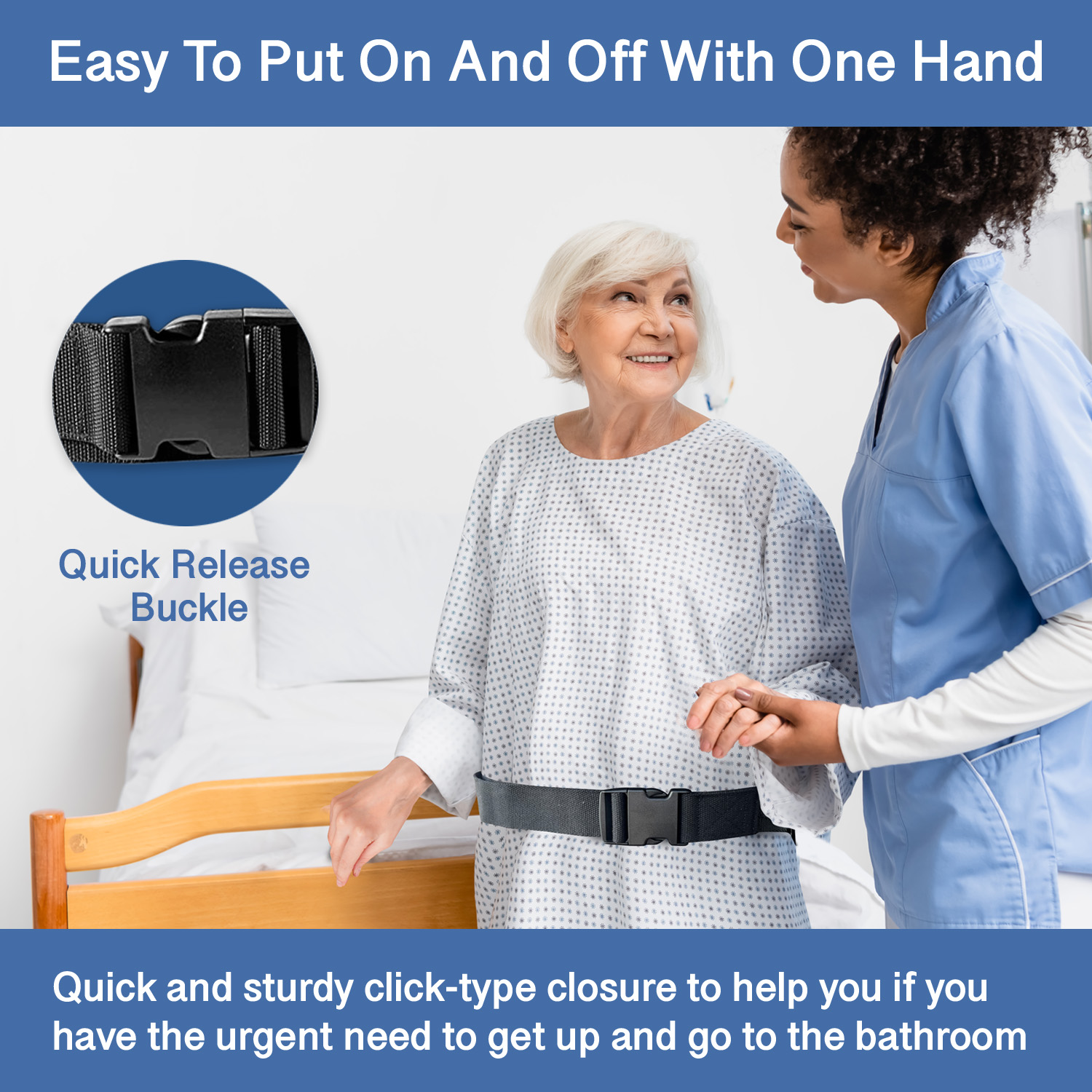At Simply Senior, we understand the importance of ensuring the safety and well-being of seniors and individuals with limited mobility. One invaluable tool that caregivers rely on for safe transfers and mobility assistance is the gait belt, also known as a transfer belt. When used correctly, gait belts provide essential support and stability during transfers and ambulation. In this blog, we’ll explore tips and best practices for safely using gait belts to make caregiving tasks more comfortable and secure.
Why Gait Belts Are Important
Before diving into safety tips, let’s briefly understand why gait belts are essential:
Gait belts offer support: They provide a secure grip on individuals who have difficulty standing or walking independently. This support prevents falls and injuries during transfers.
Gait belts reduce strain: Caregivers can use gait belts to assist without putting undue strain on their own backs, reducing the risk of caregiver injuries.
Gait belts promote independence: When individuals feel supported and secure, they’re more likely to participate in daily activities and maintain their independence.
Tips for Safely Using a Gait Belt
1. Choose the Right Gait Belt:
Start by selecting a gait belt that fits properly and is appropriate for the individual’s size and weight. A gait belt that is too loose or too tight can compromise safety.
2. Inspect the Gait Belt:
Before each use, examine the gait belt for any signs of wear, tear, or damage. Ensure that all buckles and fasteners are secure and functioning correctly.
3. Proper Placement:
Position the gait belt snugly around the individual’s waist, just above their hips. Make sure it’s centered and level to distribute the pressure evenly.
4. Two-Finger Rule:
After fastening the gait belt, use the “two-finger rule” to check for a snug but not overly tight fit. You should be able to slide two fingers comfortably between the belt and the individual’s body.
5. Maintain Clear Communication:
Communicate clearly with the person you’re assisting. Explain the process, ask for their cooperation, and provide reassurance throughout the transfer.
6. Bend at the Knees:
When assisting someone to stand or sit, bend your knees instead of your back to minimize strain. Keep your feet shoulder-width apart for stability.
7. Use Proper Gripping Technique:
Grasp the gait belt handles or straps securely with both hands. Maintain a firm grip while providing support during transfers or ambulation.
8. Support and Guide:
While using the gait belt, offer support and guidance to the individual. Gently guide them in the desired direction, ensuring they feel stable and secure.
9. Check for Obstacles:
Before moving, clear the path of any obstacles, such as rugs or furniture, to prevent tripping hazards.
10. Take Your Time:
Rushing transfers can lead to accidents. Take your time and move at a pace that ensures safety and comfort for both you and the individual.
11. Practice Regularly:
If you’re new to using a gait belt, practice transfers with a trained professional or therapist until you’re confident in your technique.
12. Be Prepared for Emergencies:
Always have a plan in place for emergencies, such as what to do if the individual begins to fall during a transfer.
Conclusion
Gait belts are valuable tools for caregivers, providing essential support and stability during transfers and mobility assistance. By following these safety tips and best practices, caregivers can ensure that the use of gait belts remains a reliable and secure method for maintaining the safety and independence of seniors and individuals with limited mobility. At Simply Senior, we’re committed to empowering caregivers with the knowledge and tools they need to provide the best care possible.


